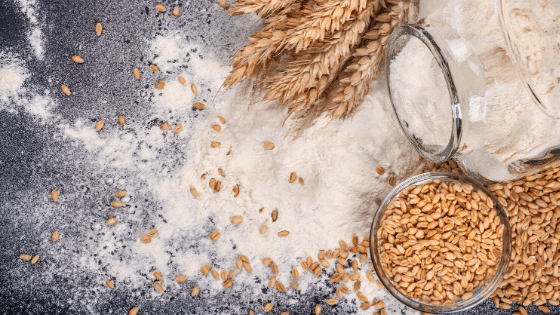
Diet & nutrition has been a hot topic, especially with the holidays going on. Recently, I had an interesting conversation with a friend who is extremely health conscious. By that, I mean they understand the body, they exercise, and they eat religiously, not just right, but religiously.
We were talking about quinoa and they said, “Oh, that is the worst food ever because your body can’t use it. It just rots in your guts.”
This brought me back to the idea of resistant starches and how some of the information that we’re getting out there is claiming that they’re useless to the body. But as far as being useless, that’s not the case.
In fact, these resistant starches can be some of the most amazing foods that our bodies can receive, as long as we are preparing them the right way and eating them the right way.
There are all kinds of information out there about what the healthiest diet is. And unfortunately, you hear a lot about the Keto diet, you hear about Atkins, you hear about the South Beach diet, you hear about fasting. They all have a place and have some benefits, but in terms of everyday life, we have to understand diet the way that our bodies need it.
People tend to talk about how bad grains are for our system. But the reality is, it’s not the grains that are bad, it’s what we have done to the grains.
Let’s use wheat as an example.
Before WWII, we ate wheat, right? Now think about the obesity rates back then. They were extremely low, and we had wheat in everything; bread, pasta, etc.
After WWII, we wanted to mass produce everything from our weapons to our clothing. Everything changed. We even changed the way we make bread. Scientists in the food industry started to cross breed wheat so it was bigger and fuller. What they noticed is that they got more bang-for-the-buck energy, although it wasn’t necessarily great energy.
Another thing we have altered is our yeast.
The way we used to make bread (and still do in Europe) was by mixing it up with a yeast starter the night before. The powerful thing about this preparation is that these starters would chew up the gluten. So, we would essentially end up with a very low gluten bread. Or if it was left longer, we could even get zero gluten bread from wheat.
Over time, that process was cut out and we began using rapid rising yeast. At first, they would just throw the flower and yeast in together, but it was so crumbly they couldn’t do anything with it. Then they thought, what are we going to do with this?
Well, if you’ve ever wondered where the name gluten came from, it’s because it acts like glue. So, again they continued to cross breed the wheat until it had increased gluten (which is the thing that has caused a big problem with the wheat in today’s society).
Basically, we are no longer taking care of wheat the right way. We’re putting it into our system in an altered form, and we’re suffering the consequences from it. And wheat is just one of the examples. We do a similar thing with rice. We do a similar thing with beans.
By taking the extra time to prepare these foods the right way, we end up with these resistant starches that allow a nice, slow release of carbohydrates into our system and propagate the healthy microbiome. And the benefits of that? The list could go on and on. It’s just a matter of getting back to some basics, properly preparing our food, and doing it for health rather than for speed and convenience.
To learn more about resistant starches and how to properly prepare your food, listen to our podcast below. Also available on Youtube and iTunes.






